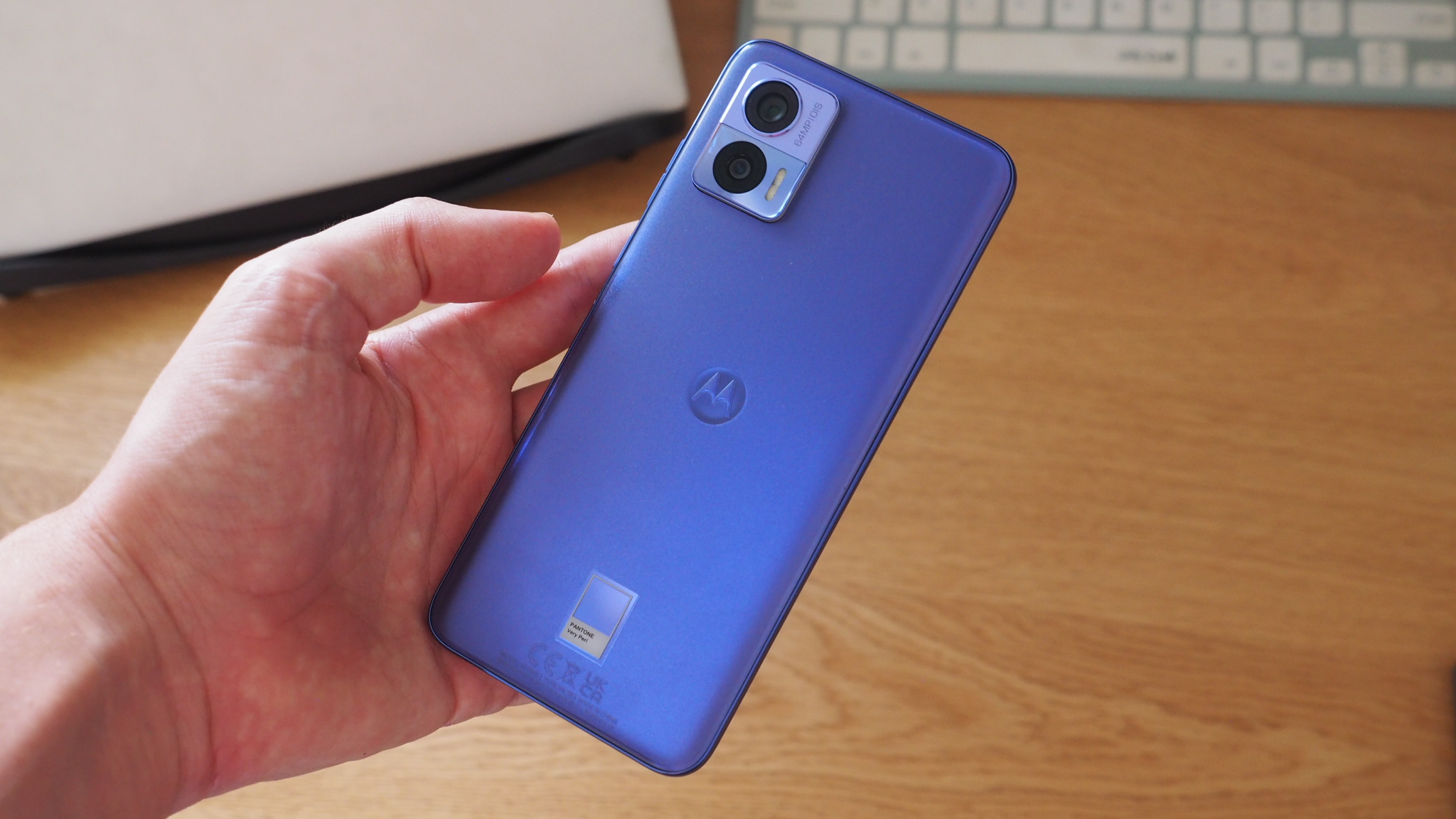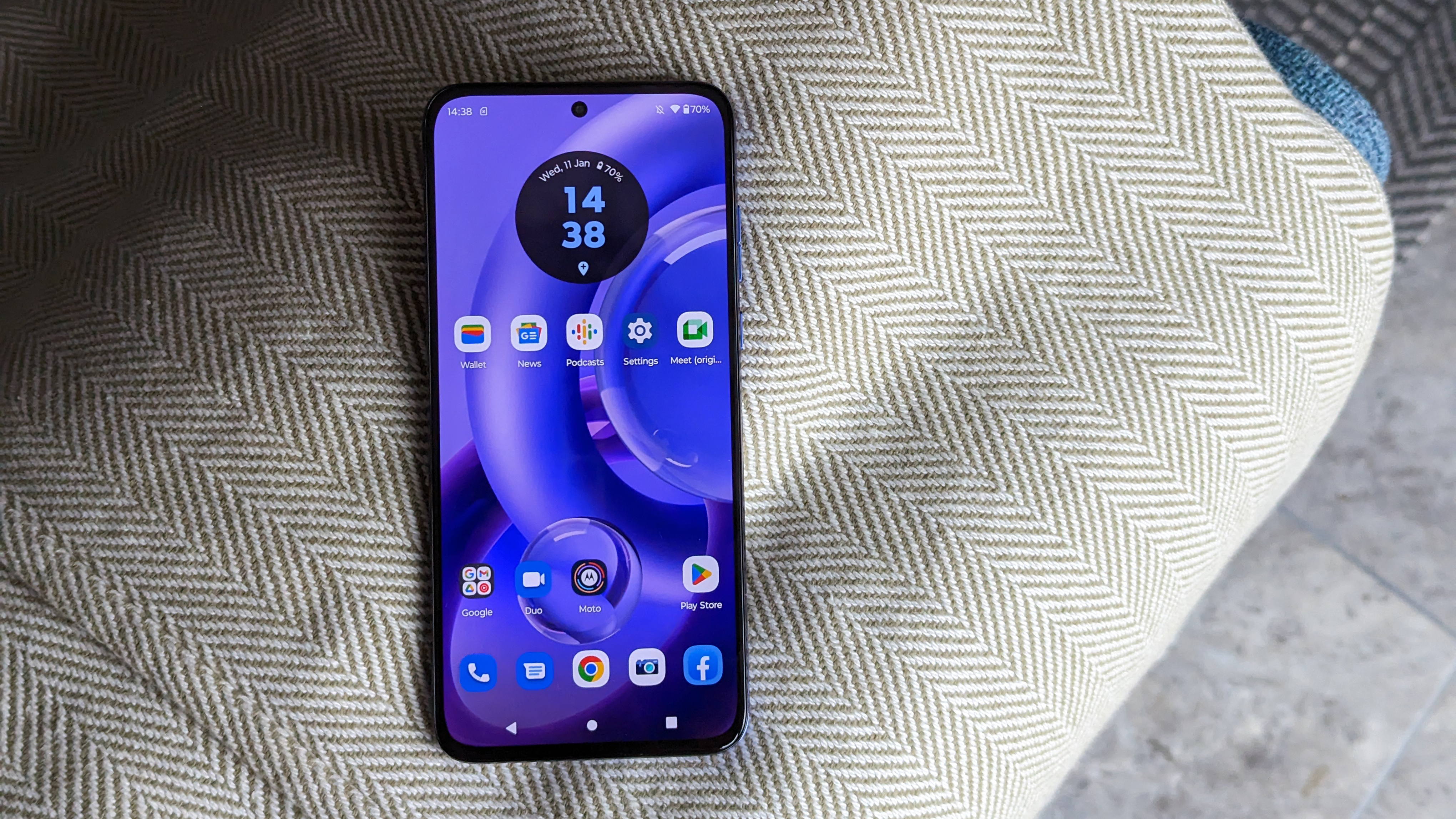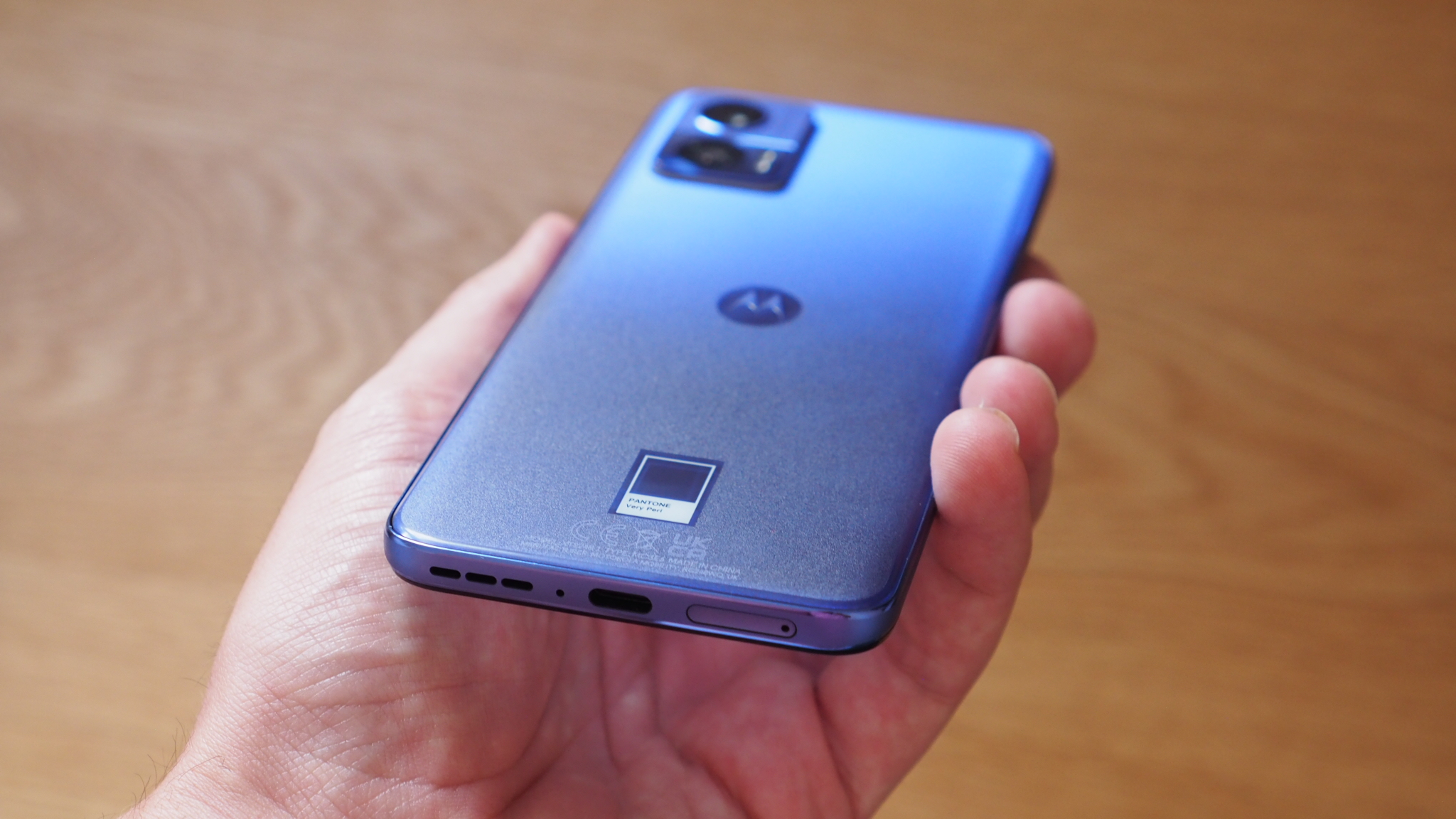Motorola Edge 30 Neo review: Pantone colours bring a dash of style
Cute and colourful, but the Moto Edge 30 Neo's results are more black and white... is it the budget Android phone to buy?


The Motorola Edge 30 Neo’s appeal rests primarily on its shape and weight: it's thin and light and has a bright screen unlike some of its competition. It's also dressed in fancy Pantone colours that look great (aside from the 'sticker' logo on the back). Thing is, in the affordable Android market there is so much competition that's made of more premium materials and with more powerful processors, that you'll only want to give the Motorola a go if the style aspect is the biggest lure of them all. This is a thin and light phone, and Motorola reinforces that angle by pa
-
+
Bright screen
-
+
Super light, and slim
-
+
Fairly fast charging
-
-
Plastic bodywork
-
-
Camera doesn’t stack up that well at night
-
-
Unimpressive processor
Why you can trust T3
The Motorola Edge 30 Neo is the baby in the Edge 30 family. It strips back a lot of the higher-end tech, the powerful processor and elevated build quality of the Fusion and Ultra models. So what are we left with? Well, a very cute design adorned with Pantone Color of the Year finish, but of course.
The Edge 30 Neo ends up as a much slimmer and lighter alternative to phones like the Moto G62, affordable monster Android phones that have screens larger enough to make steamed video look crackin’. And that’s totally valid in the quest to be one of the best cheap phones in the Android market.
The Edge 30 Neo’s big issue, though, is other brands get you a lot more for similar cash. One of my top examples is the OnePlus Nord 2T. It has a glass back, a better primary camera, much punchier processor, leaving the Edge 30 Neo’s top techy calling card, well, that Pantone finish. Which, well, isn't all that useful in the end.
Moto Edge 30 Neo: Price & Availability
The Motorola Edge 30 Neo is in the lower-to-mid section of the pack, its target price all about affordability, at around the £299 mark. Interestingly, Motorola doesn't deliver this device in the USA, which is the case with many of its handsets.
Availability was in the mid-to-late part of 2022, so I'm many months late on delivering this review. I suppose, as alluring as that Pantone-adorned finish is, I've just been too preoccupied with the best Android phones, such as the Google Pixel 7 Pro, to give this mid-level handset the attention it deserved.
Moto Edge 30 Neo review: Design

The Motorola Edge 30 Neo comes across better at arm’s length than in the hand. Motorola has licensed out four Pantone colours for the phone: a purple, a black, a silver and a green. Obviously they've got fancier official names, but I'm telling it like it is.
Yes, the whole idea of trademarking a colour is a bit silly in the first place, but the real goal here is to get the Pantone logo on the back of the phone. It’s like being able to say you painted your house using la-de-dah Farrow & Ball paint. As I've said before, though, I find that Pantone 'sticker' to be the one big design hiccup of this device. I don't really get it.
Get all the latest news, reviews, deals and buying guides on gorgeous tech, home and active products from the T3 experts
Fair play to Motorola, though, all the colours are truly nice. However, get up close and you’ll see the Motorola Edge 30 Neo lacks the classy build of the step-up Edge 30 Fusion. Back and side parts are plastic, just like a super-budget phone, the screen is flat, and the fingerprint scanner isn’t fast either.
This isn’t surprising stuff given the price point, but Android phoness like the Nothing Phone 1 sit in a similar price band and use much less plastic, much more glass and metal. The difference is night and day... or Very Peri, if you're going by my review handset's finish.
However, the Motorola Edge 30 Neo is very thin and light. Just 155g and 7.8m thick, it’s one of the trimmest phones in its class. This is what really separates the Neo from the many other Motorola phones you could get with this budget.
As with the Edge 30 Fusion, water resistance is very limited. Motorola has given the Neo an IP52 rating, which basically tells you it can handle the odd bit of rain. It has a stereo speaker array too, one with fair but not standard-setting sound quality.
Moto Edge 30 Neo review: Display

The Motorola Edge 30 Neo has a petite 6.28-inch screen with a resolution of 2400 x 1080 pixels. It’s smaller than average and, as a result, sharper than the average too. I find it kinda nice to not be handling a gigantic phone for one and think others who are looking for the best small phone will also appreciate it.
However, brightness is what stands out, just as on the Edge 30 Ultra (that's the highest-end model in this series). The Neo offers great clarity indoors and outdoors, and the turbo mode it heads into when in direct sunlight is impressive. This phone is noticeably brighter than the OnePlus Nord 2T, for example, which isn't entirely me eating my words, rather more giving credit where it's due.
We seem to be going through a bit of a display brightness level-up across more affordable phones at the moment, where they can actually get near-ish the figures manufacturers claim on their websites. It's a great thing for content, although it can affect battery life.
The Neo's screen is a 120Hz OLED panel, pretty much guaranteeing you smooth motion, superb contrast, deep blacks and, in the right mode, eye-popping colour. However, the Motorola Edge 30 Neo doesn’t support HDR YouTube video according to my testing... odd.
Moto Edge 30 Neo review: Performance

Motorola demonstrates a light touch in its software, which I've always appreciated. It leaves core parts of the Android operating system as they are, which is handy as it actually lets you appreciate the changes Google makes in each major update. In this case, that means you get to see the more colourful drop-down nav panels, for example.
Motorola’s additions sit around the periphery, staying out of the way. They are the same as ever in the Motorola Edge 30 Neo, headed up by a bunch of gestures that control things like the Do Not Disturb mode and rear LED flashlight, and act as a shortcut to the camera app.
The Peek Display standby screen, which shows notification icons and the time, is the other notable extra. This lights up when the phone thinks you’ll be looking at the screen, such as when you pick it up from a desk. And if it's face-down there's a fun feature on the back: a notification light that surrounds the camera.
General performance is perfectly solid too, but the Motorola Edge 30 Neo’s processor is not great considering the phone’s price. It uses the Snapdragon 695. It has 5G, sure, its CPU-side performance is entirely acceptable, but unlike the higher-end Qualcomm models the gaming performance here is not all that hot.
This is a small and light phone, already not an obvious fit for obsessive mobile gamers. But if you want to play Fortnite on-the-go, you can do much better for your money. Xiaomi’s Poco X4 has radically better gaming performance for similar money. This Moto phone will only play it at basic graphics settings.
It also has quite different audience in mind compared to the Poco X4, but the Nothing Phone 1 and OnePlus Nord 2T will also handle top-tier games better, without heading all the way down a “phone geek” design road.
Moto Edge 30 Neo review: Cameras

The Motorola Edge 30 Neo camera sounds great on paper. It has a 64-megapixel main with optical image stabilisation (OIS). This means a little motor can tilt the camera lens to compensate for handshake motion, and it’s far from a standard feature at the price.
It also has a 13MP ultra-wide camera, whereas some mid-range phones only have 8MP sensors.
This camera array is solid enough. It can take great pictures during the day if you put a little effort in. However, it doesn’t compete with the best-in-class performers.
At night the Motorola Edge 30 Neo puts out fairly disappointing results though. While there’s some attempt at the kind of computational photography that revolutionised things some years ago, its effectiveness is not at the same level as that of the Nothing or OnePlus alternatives.
I also found a fair bit of overexposure in images, suggesting the dynamic range enhancement isn’t as smart as it could be. Considering the Snapdragon 695 processor has already been identified as a weak spot of the Motorola Edge 30 Neo, could it be to blame here too? Quite possibly.
It’s almost certainly to blame for the Motorola Edge 30 Neo’s poor video capture. The Motorola Edge 30 Neo can only capture video at up to 1080p at 60 frames per second. And you get much better results from the 1080p 30fps mode, as image quality and clarity are simply a lot better. Plenty of phones can do a great job at 4K/30 for similar money.
Moto Edge 30 Neo review: Battery

We’ve blamed the Motorola Edge 30 Neo’s Snapdragon 695 for a lot. But it may also be behind the phones surprisingly decent battery life. So there is clear benefit too.
This phone has a relatively small 4200mAh battery. As I've seen in the Edge 30 Fusion, it has a smaller battery in order to make the extra-slim, extra-light shell possible. This could have led to a stamina disaster but the Neo gets through the average day of use just fine, with enough left in the tank by the end to give you confidence you won’t need a mid-afternoon top-up that often.
I'm only ascribing the better-than-expected battery life to the processor because the Sony Xperia 10 IV has the same brains and offers fantastic battery life using a larger 5000mAh cell.
The Moto's 68W fast charging is great at the price, too, taking you to a full battery in a little over 40 minutes. It even supports wireless charging, but with 5W max input it’s going to seem dismally slow next to the cabled approach.
Moto Edge 30 Neo review: Verdict

The Motorola Edge 30 Neo’s appeal rests primarily on its shape and weight. This is a thin and light phone, and Motorola reinforces that angle by partnering with the OG of colour categorisation Pantone for the finishes.
These make the Edge 30 Neo the phone equivalent of an interior design show. But it’s one of those low-rent daytime ones as this is an all-plastic affair, bar the glass covering the screen. I do also wish the Pantone 'sticker' wasn't so prominent.
The Edge 30 Neo certainly has its appeals, but it isn’t a leader in technology, as the processor is just OK, the camera doesn’t perform well at night, and it’s clearly not the obvious pick for gamers.
However, the Neo's screen is super-bright, which pairs well with the slim-and-light style if you mostly just want a phone that won’t get on your nerves. Motorola does this and software better than its nearest competition, which I'll delve into below, too, which means there's obvious appeal despite some drawbacks.
Also consider
You have a bunch of solid options in this price bracket. Sadly the closest in style is another middling contender, the Sony Xperia 10 IV. That phone has fantastic battery life, but otherwise has some similar issues. It’s not as well-made as previous phones in the series, you can get better cameras and more power for your cash elsewhere too.
OnePlus Nord 2T is one of the best examples of a phone that offers a bit more in most areas. It has a glass back, the camera holds up better at night and the processor is a lot more powerful.
You can say the same about the Nothing Phone 1, which is great value assuming you can stomach its unusual design. Some people love it though, I'm still on the fence.

Mike is T3's Tech Editor. He's been writing about consumer technology for 15 years and his beat covers phones – of which he's seen hundreds of handsets over the years – laptops, gaming, TV & audio, and more. There's little consumer tech he's not had a hand at trying, and with extensive commissioning and editing experience, he knows the industry inside out. As the former Reviews Editor at Pocket-lint for 10 years where he furthered his knowledge and expertise, whilst writing about literally thousands of products, he's also provided work for publications such as Wired, The Guardian, Metro, and more.
